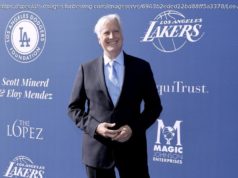 The so-called frontier markets have enjoyed a great start to the year, and investors who can handle the risk could find that these far-afield investments make a welcome addition to their portfolio.
The so-called frontier markets have enjoyed a great start to the year, and investors who can handle the risk could find that these far-afield investments make a welcome addition to their portfolio.
The iShares MSCI Frontier 100 ( FM ) has been one of the best-performing large ETFs in 2017, logging a 13 percent rise year to date. That puts the S&P 500 ’s 2.6 percent bump, as well as the 8 percent rise for the comparable emerging markets ETF ( EEM ), to shame.
MSCI classifies stock markets into three groups — the developed markets like the United States and Japan, the emerging markets like Brazil and Russia, and the frontier markets like Kuwait and Vietnam. Frontier markets tend to be less developed than emerging markets and more difficult for foreign investors to access; the index provider has noted that frontier markets have „generally lower investability characteristics. “
On the other hand, their diminished connections with the global business and investment community lend the frontier markets an interesting benefit in the eyes of American investors: Their performance does not closely track that of U. S. stocks.
Over the past two years, there has been almost no meaningful relationship between the SPY ETF that tracks the S&P 500 and the frontier markets ETF (in mathematical terms, the two-year correlation of daily moves between the two is 0.11.). That compares to a notably tight relationship between the SPY and the EEM emerging markets ETF (with a comparable correlation of 0.78). This means that investors can expect to see notable diversification benefits as a result of investing in the frontier markets.
That might make up for a distinct lack of correlation within the ETF itself. Fully 22 percent of the stocks represented in the ETF are from Kuwait, while 18 percent are from Argentina, and 11 percent are from Pakistan (though the latter graduates to emerging market status as of May). The frontier group, then, has been a big beneficiary of an early year rally in Kuwaiti stocks, which in turn have been the beneficiaries of market reforms and solidifying oil prices, according to Bloomberg.
Something else investors might want to note is the ETF’s relatively high expense ratio, at 0.79 percent.
Yet despite the high cost, and the fact that he’s not particularly bullish on the frontier markets after their great recent run, market strategist Max Wolff of 55 Capital thinks the ETF deserves a close look.
„It has a place in our diversified portfolio,“ he said Thursday on CNBC’s “ Trading Nation. „






